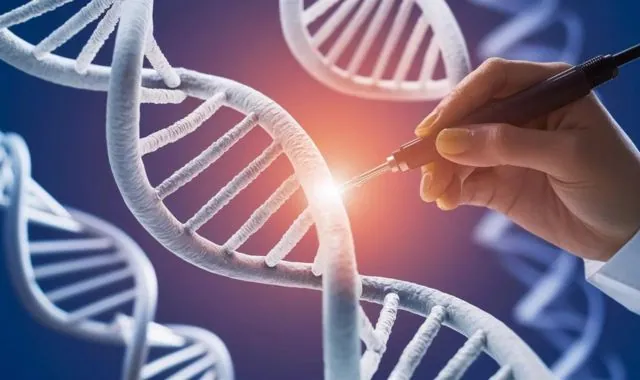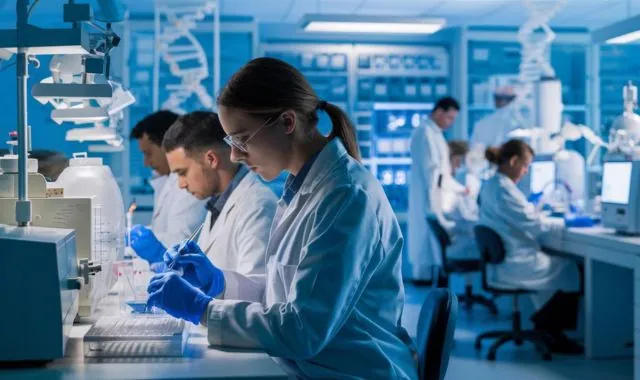Physical Address
304 North Cardinal St.
Dorchester Center, MA 02124

Unleash the power of life itself! Explore rDNA technology, where scientists snip and paste DNA to revolutionize medicine, agriculture, and forensics. Discover how rDNA produces life-saving drugs and creates supercharged crops. This powerful tool holds promise for the future, but ethical considerations and responsible use are crucial. Learn more about rDNA technology and its exciting possibilities!

Imagine wielding the power to manipulate the very building blocks of life. This isn’t science fiction! Recombinant DNA (rDNA) technology allows scientists to cut, paste, and modify DNA, revolutionizing fields like medicine, agriculture, and forensics. Let’s delve into the fascinating world of rDNA technology.
rDNA technology essentially involves tinkering with DNA. Here’s a breakdown of the key concepts:
DNA and Genes: DNA is the blueprint of life, containing the instructions for building and maintaining an organism. Genes are specific portions of DNA that code for particular traits.
Scientists use restriction enzymes, which act like molecular scissors, to cut specific sections of DNA. These snippets can then be inserted into a carrier molecule, like a plasmid, and introduced into a host organism. The host then replicates the rDNA, producing the desired protein or trait.
rDNA technology relies on a specialized toolbox:
These molecular scissors precisely cut DNA at specific sequences.
These small, circular DNA molecules act as delivery vehicles, carrying the desired DNA fragment into the host organism.
This “molecular glue” seals the deal, permanently joining the foreign DNA with the plasmid.
rDNA technology has far-reaching applications:
For diabetics, rDNA technology has been a game-changer, enabling the production of synthetic human insulin, a critical treatment.
rDNA-produced human growth hormone helps children with growth deficiencies reach their full potential.
By introducing genes for natural pest resistance, rDNA technology can create crops less reliant on pesticides, promoting a more sustainable agricultural system.
Herbicide-tolerant crops allow farmers to control weeds more efficiently, potentially increasing crop yields.
rDNA technology is instrumental in forensics, allowing for accurate identification of individuals from DNA samples at crime scenes.

While rDNA technology holds immense promise, it’s crucial to consider:
Regulations and risk assessments are essential to ensure the safe use of rDNA technology and minimize potential environmental or health risks.
The ability to modify genes raises ethical concerns. Open discussions are necessary to ensure responsible use of this powerful technology.
The potential applications of rDNA technology extend far beyond what we’ve already explored. Here’s a peek into what the future might hold:
Correcting genetic defects at the source holds immense promise for treating a wide range of diseases like cystic fibrosis and sickle cell anemia.
rDNA technology could pave the way for personalized medicine, tailoring treatments to an individual’s unique genetic makeup.
rDNA-engineered microbes could be used to clean up environmental pollutants, offering a sustainable solution to pollution problems.
Transplanting animal organs into humans could become a reality if rDNA technology can overcome compatibility issues.
As we explore the exciting possibilities of rDNA technology, challenges remain:
Modifying complex biological systems can have unintended consequences. Long-term research is crucial to understand the potential risks.
Ensuring equitable access to rDNA technology and its benefits for all nations and communities is a critical challenge.

Recombinant DNA technology has revolutionized our understanding of life and opened doors to incredible possibilities. From life-saving medicines to sustainable agriculture, its impact is undeniable. However, wielding this power responsibly is paramount. Ongoing research, ethical considerations, and open communication are essential as we navigate the exciting yet complex future of rDNA technology. By working together, we can ensure it serves as a force for good, shaping a healthier, more sustainable future for all.
A: rDNA technology allows scientists to manipulate DNA by cutting, pasting, and introducing specific genes into organisms.
A: Restriction enzymes act like molecular scissors, plasmids act as delivery vehicles, and ligase acts like molecular glue to join foreign DNA with plasmids.
A: rDNA technology is used to produce life-saving drugs like insulin and human growth hormone.
A: This technology helps create pest-resistant and herbicide-tolerant crops, leading to a more sustainable agricultural system.
A: Modifying the blueprint of life raises concerns. Open discussions are necessary to ensure responsible use of this powerful technology.
A: The future might see gene therapy, personalized medicine, and bioremediation using rDNA technology.
A: Unforeseen consequences and unequal access to this technology pose challenges for the future.